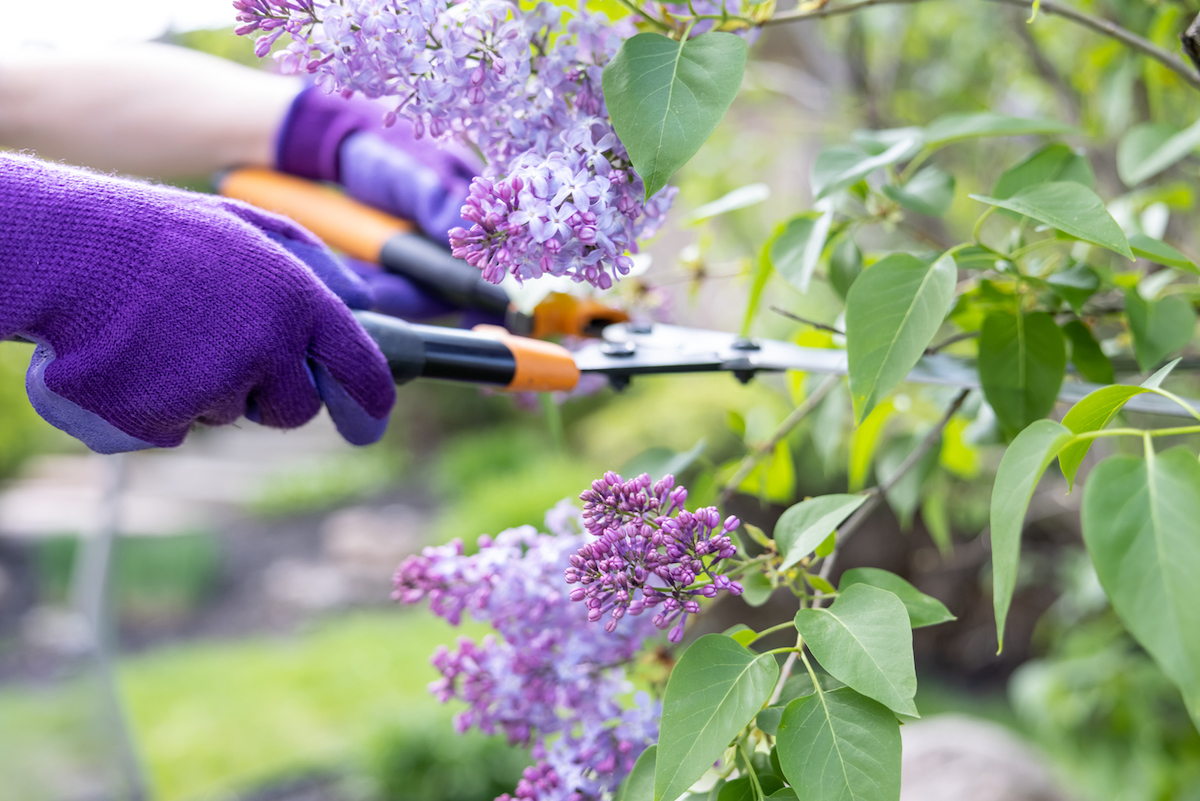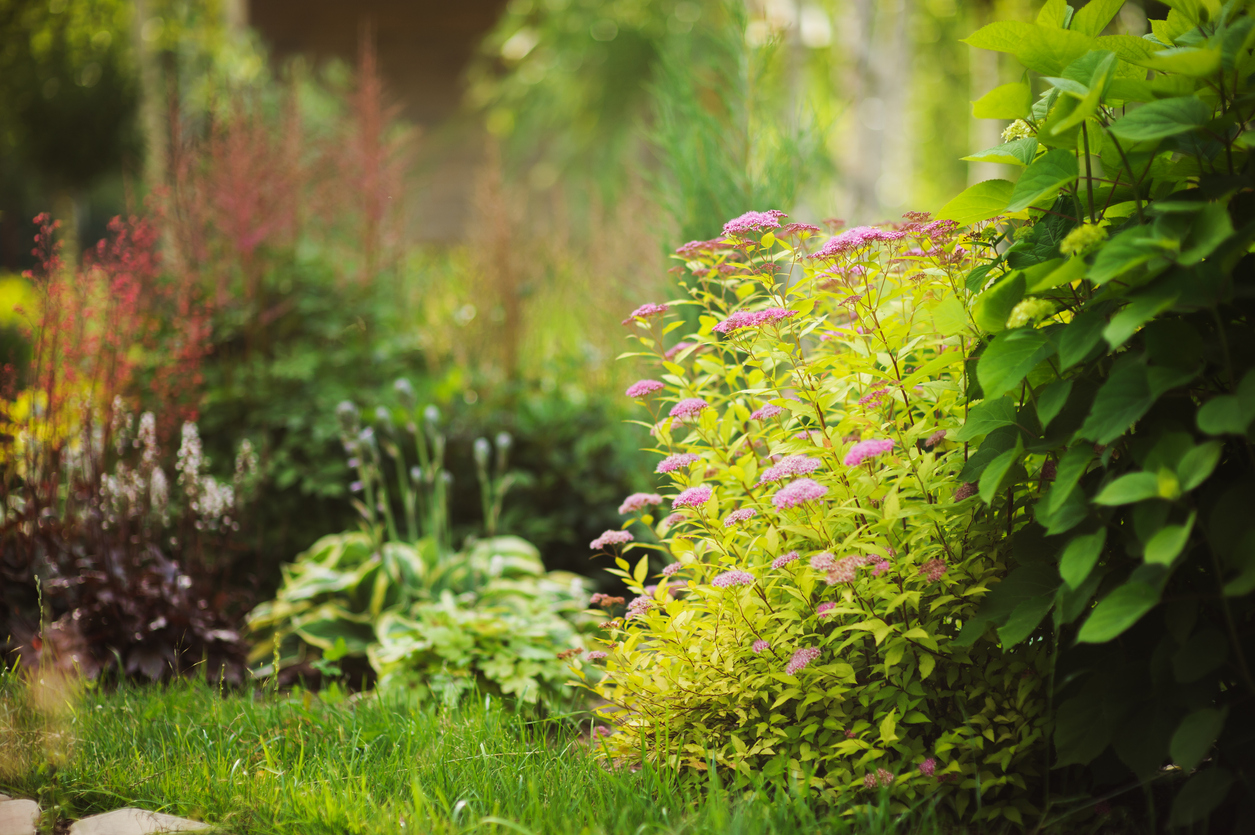

We may earn revenue from the products available on this page and participate in affiliate programs. Learn More ›
Flowering plants have many similarities like light and moisture needs and soil requirements. But some significant differences in annual vs. perennial plants are important to understand. Annual plants, often started from seed, live for only one growing season, dying off with autumn’s hard frost. They complete their life cycle in a season, from sprout, to flower, to seed. Perennial plants regrow every spring—or at least for several years. Generally, you can expect them to return for at least 3 years.
Another difference between perennial vs. annual plants centers around the length of their growing season. Annuals will brighten up your garden with colorful blooms all season long, but perennials have shorter blooming seasons. The time of blooming depends on the variety of perennial.
1. Annuals last for one growing season.
Although annuals last for only one season, their brightly colored, showy blooms that appear all summer secure their spot in gardens and the hearts of plant lovers everywhere. Gardeners can sow annual plants from seed or purchase them as bedding plants for a head start on bloom time. Either way, growing annuals typically is an affordable way to fill a flower bed or planter box with cheerful color.
As the “old reliable” of a garden, perennials—meaning plants that regrow for 3 or more years—offset the higher price paid for them at garden centers. Perennials generally bloom for a shorter period than annuals, and each variety has its season, ranging from spring to fall, to extend the garden’s colorful time.

2. Perennials live for many years, but not forever.
What are perennials? Perennials are plants that live multiple years; how many depends on the variety. Some, like delphinium, are short-lived plants lasting just 3 or 4 years. Other perennials can live for decades, and a select few, such as peonies, can live virtually forever (or at least 50 years) with good care. The long-lived ones are often more difficult to transplant and take longer to get established and bloom.
Many perennials are low-maintenance plants, although some, such as daylilies and hostas, benefit from division every few years; this also extends the life of the plants.
Knowing what are perennial plants depends on where you live. In some growing zones, one plant might be a perennial but only grow as an annual in other growing zones. For example, dahlias are considered a perennial plant in many southern areas, but because they don’t survive a hard frost, they are annuals in more northern locations.
The perennial definition does not typically include biennial flowers, which are self-sowing plants that live 2 years, usually flowering in their second season. By properly staggering plantings of biennials, gardeners can enjoy their blooms year after year.
Related: 20 Perennials to Plant in the Fall for Beautiful Spring Flowers
3. Annual flowers tend to bloom longer than perennials.
Typically, annual flowers bloom for a longer period than perennial flowers do. They’ll often bloom all summer long, especially if you practice “deadheading,” the process of removing the spent flowers (dried or dead flowers). In addition to keeping the plant looking neat and tidy, deadheading can stimulate the plant to produce more blooms since it’s not wasting energy on faded flowers or producing seed heads. Other annuals are “self-cleaning” and need no deadheading.
Many annuals bloom from spring until the first frost. Adding them to containers or beds results in lots of lush, long-lasting color in your garden because of their fast growth and constant blooming. Because annuals come in a wide variety of colors, sizes, and shapes, and because some varieties love shade while others seek the sun, they can produce some color all season while perennials are forming flowers or fading from spring blooming.

4. Perennial plants often cost more than annuals.
Normally, the cost is higher for a perennial than for an annual, which seems logical, considering that the perennial will last considerably longer. When put into context, purchasing annuals every year might not be much, if any, more expensive than buying perennials once. Most perennials don’t grow as well from seeds as annuals do, so you must buy potted plants, which cost more than seeds.
Although the initial investment is higher, there’s a payback with perennials. First, you don’t have to buy them again each year. Some also need dividing every few years, which provides “new” plants.
In fact, many gardeners consider the purchase price more than offset by the longevity of a perennial, as well as by the reduced labor. Often considered a “plant it and forget it” item, a perennial plant usually requires less maintenance than annuals do.
Related: The Year’s Best Plant Bargains Are On Now—But Read This Before You Buy
5. Planting annuals allows for more experimentation in the garden without a long-term commitment.
Because annuals are relatively inexpensive and live only one growing season, they allow gardeners to experiment with layout, designs, or colors.
As trees and bushes grow, they might put out more shade or take up more space, which effectively changes conditions for other plants in the garden. Rather than have perennials become unhappy, it’s easier to change which annuals you add to a given area from year to year.
Since annuals live for only one growing season, they aren’t assigned a growing zone designation. This allows gardeners in northern climates to try out different colors, heights, textures, and forms. For some gardeners, it’s fun to create different looks from year to year and place the annuals where they will shine.

6. Many perennials can be divided regularly to fill out the garden or share with friends and neighbors.
After some perennials have become established, they will need occasional dividing to keep them healthy. Sometimes the center dies out or they become so dense, they don’t flower well. Dividing prevents overcrowding and helps control the size of the plant. An added benefit is that it provides additional new smaller plants to share, sell, or plant elsewhere.
When dividing a perennial, it’s best to dig up the entire plant, remove the dirt ball, and then gently tease apart the new sections from the old or use a sharp knife to slice it, ensuring that each clump has a sizable root system. It’s best to divide plants after they’re done blooming for the season and not when they’re in full growth.
Check with local sources about the need to divide a perennial plant. Sometimes, pruning once a year might be all you need to do.
Related: 20 Plants That Thrive Even When Temperatures Rise
7. Perennials that are native to a region usually require less maintenance and attract local pollinators.
Adding plants that are native to your region is a great way to achieve a successful, healthy garden for less work and cost. Unlike non-native species that might be fussy in their care requirements or aggressive in their growth patterns, native species will assuredly be happy in your garden.
Benefits of native plants include the fact that they attract birds and other pollinators while also supporting wildlife through diverse habitats and food sources. Including them in your landscape is a good way to promote biodiversity and help local wildlife.
Native plants are already suited to the climate and soil, so they tend to need less watering, less fertilizing, and less pest control—a more eco-friendly approach to gardening. Native plants will also contribute to healthier soil and clean water, which are additional environmental advantages. As a bonus, native plants are less prone to pests and diseases.

8. Incorporating a mix of annuals and perennials in a garden provides limitless color, shape, texture, and care options.
Mixing perennials and annuals in the garden combines the best of both worlds for a bountiful tapestry of color, shape, and form. To avoid empty spaces lacking color before perennials bloom or as their color wanes, add annuals. You also can place annuals near a prized perennial for contrasting or complementary color.
Many gardeners choose to fill containers with annuals each year and place them around the garden or home to balance perennial plant color. Having a garden design with a mixture of annuals and perennials adds interest through texture, form, and color.
Low-growing annuals like portulaca (purslane), which grows only 6 to 8 inches high but spreads, or zinnias, which come in a variety of colors and heights, make a cheerful border for taller perennial plants. Planting swaths of heat-tolerant annuals like cosmos or lantana adds drifts of color during the dry part of summer when other flowers are flagging. For shady areas, impatiens can add a pop of color as well as a textural contrast to a bed of hostas or ornamental grasses.
There are endless pleasing combinations of annuals and perennials that can delight a gardener all through the growing season. Keep in mind that it helps to plant perennials and annuals with similar light and water needs together so both will be healthy and produce their dazzling best.
